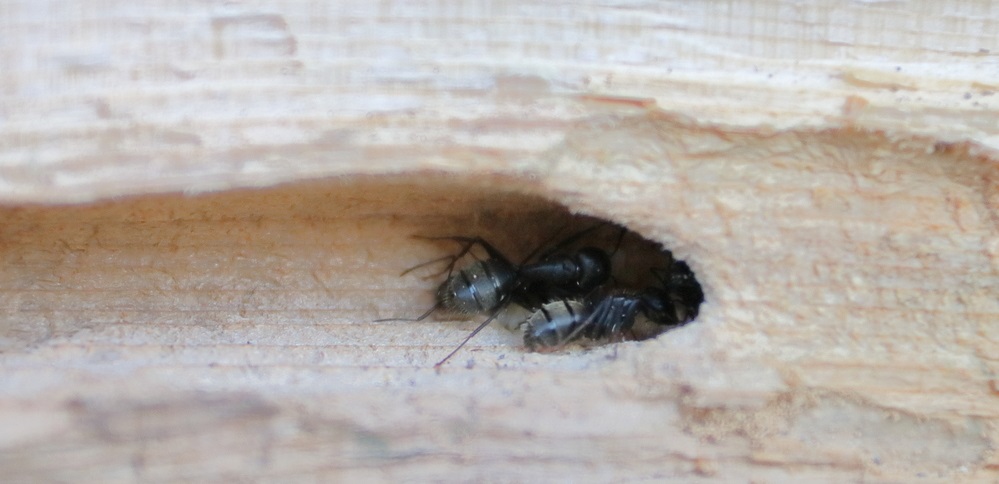


Carpenter ants are wood-destroying insects that can cause significant damage to homes and other buildings. These ants vary in size and color but are usually large (1/4-1/2 inch) and blackish. In addition, winged carpenter ants can be distinguished from termites by their larger size and shape of their antennae, waist, and wings.
Here in New Jersey, we will see carpenter ants emerge from their nests in April or May as the weather warms up for spring. They search for water and food, such as sweets, pet food, and plants infested with honeydew-producing insects (such as Aphids).
If you're suddenly seeing carpenter ants in your home and its early spring, it's very likely you have a nest in the house somewhere. If you notice these ants later in the year, it won't be as obvious if they've been there the whole time or if it's a new problem.
The presence of worker ants in early spring is often the first sign that carpenter ants have infested a structure. They may be found near water sources like dishwashers, sinks, and showers and will travel along pheromone trails to guide other ants to the water. The ants will collect water and store it in their abdomen to bring back to the nest.
Carpenter ants colonies take 3-6 years to reach reproductive maturity and can live for over 15 years. Mature colonies, with over 2500 ants, will swarm once or twice a year in warm weather to release reproductive forms. Occasionally, swarms of winged carpenter ants called “reproductive” will emerge inside a home. Carpenter ant swarms usually occur in the spring and are a sure sign that a colony is nesting somewhere inside the structure
Carpenter ants damage wood by creating hollow spaces within it for nesting. These spaces, called galleries, have a smooth, sandpaper-like appearance. Unlike termites, carpenter ants do not leave mud-like material in the damaged wood. Instead, they push out shredded wood fragments resembling coarse sawdust through preexisting cracks or slits. These fragments, along with dead ants and insect parts, strongly indicate that a carpenter ant nest is nearby. However, the sawdust may remain hidden behind walls or in other concealed areas. Ants on walls may indicate a wall void nest, while ants in other locations may be near a nest.
Carpenter ants can create nests in dry and moist wood, but they generally prefer damp wood. As a result, they are frequently found in areas where water leaks have occurred, such as around sinks, bathtubs, poorly sealed windows/door frames, roof leaks, and inadequately flashed chimneys. They are prevalent in damp, hollow spaces such as the wall void behind a dishwasher or in a hollow porch column. Since there may not be any noticeable signs of damage, probing the wood with a screwdriver or tapping along baseboards and other wooden surfaces with the blunt end of a screwdriver can help detect the excavated galleries. Carpenter ants may make a "rustling" sound inside the nest, similar to the crinkling of cellophane, in response to nearby tapping.
There are several signs that may indicate a carpenter ant infestation:
Carpenter ants may establish nests in a number of different locations. It is important to realize that these locations can be either inside or outside the structure. Carpenter ants actually construct two different kinds of nests: parent colonies which, when mature, contain an egg-laying queen, brood, and 2000 or more worker ants, and satellite colonies, which may have large numbers of worker ants but no queen, eggs, or young larvae. The carpenter ants inside a home may have originated from the parent colony or from one or more satellite nests. For example, the ants may be coming from the parent nest located outdoors in a tree stump, landscape timber, or woodpile, or from one or more satellite nests hidden behind a wall in the kitchen or bathroom, or perhaps from wood dampened by a roof leak in the attic.
The extent and potential damage to a home depend on how many nests are actually present within the structure and how long the infestation has been active. Although large carpenter ant colonies are capable of causing structural damage, the damage is not normally as serious as that from termites. In some cases, the damage may be relatively insignificant, but this can only be determined by locating and exposing the nest area.